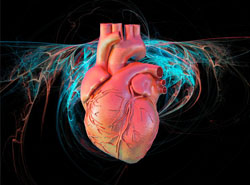- Animal Testing
- Beef
- Chicken
- Circuses
- Dairy
- Dissection
- Donkeys
- Down
- Eggs
- Foie Gras
- Fur
- Honey
- Hunting
- Lobster
- Pork
- Seal Hunt
- Turkey
- Wool
- Zoos
Animal Testing
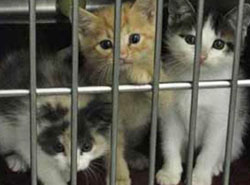
Animal tests are conducted all over the world causing horrific suffering to animals.
The majority of animals used for testing are rats and mice. Other animals used are hamsters, rabbits, guinea pigs, dogs, cats, nonhuman primates, frogs, sheep and cattle.
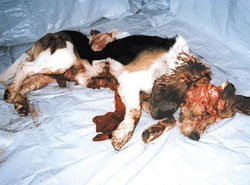
 Ask the experimenters why they experiment on animals, and the answer is: 'Because the animals are like us.' Ask the experimenters why it is morally OK to experiment on animals, and the answer is: 'Because the animals are not like us.
Ask the experimenters why they experiment on animals, and the answer is: 'Because the animals are like us.' Ask the experimenters why it is morally OK to experiment on animals, and the answer is: 'Because the animals are not like us.
-- Professor Charles R. Magel

The Animal Welfare Act
The Animal Welfare Act (AWA) is the only Federal law in the United States that regulates the treatment of animals in research, exhibition, transport and by dealers. However, even though it covers "any live or dead dog, cat, nonhuman primate, guinea pig, hamster, rabbit, or any other warmblooded animal" it excludes among others "birds, rats of the genus Rattus, and mice of the genus Mus, bred for use in research".
This means that the research industry can subject birds, rats and mice, which make up about 95% of all laboratory animals, to procedures and conditions that would be illegal for animals that are covered.
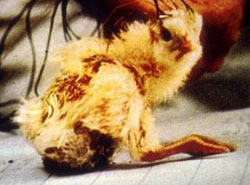
Who Conducts The Tests?
- The National Institutes of Health (NIH) in the United States: they are the worlds largest funder of animal experiments.
- The military: tests include radiation experiments, studies on the effects of chemical warfare and wound experiments.
- Private institutions and companies: many household products and cosmetics are still squirted into the animals' eyes, pumped into their stomachs, rubbed onto their skins or forced to inhale.
- Agricultural companies: experiment are performed on cattle, sheep, chickens, pigs and turkeys to try to get them to produce more milk, wool, eggs or meat.
- Education and Training: animals are used in classrooms as part of the teaching process. This includes dissecting in biology class as well as training for medical and veterinary students.
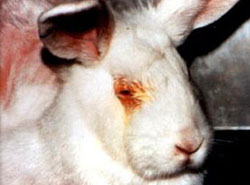
Medical Progress
Animal testing is approved of by many people, because they believe that these tests are necessary for medical progress. The truth is that many animal experiments are not only horrible for the animals, but also very unreliable, because of the physiological variations among rabbits, dogs, pigs and humans for instance.
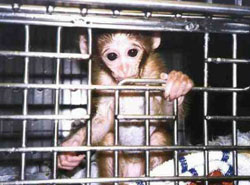
Examples
- Of the drugs marketed between 1976 and 1985, 52% were found to be more dangerous to humans than previously indicated by animal studies.
- In 1989 a study was done to determine the carcinogenicity of fluoride. During a period of two years, daily doses of fluoride were given to about 520 rats and 520 mice. Not a single mouse was adversely affected by the fluoride, but the rats experienced health problems like cancer of the mouth and bone. This study shows how test data cannot be accurately extrapolated from one species to another.
- Drugs like thalidomide, Zomax and DES were all tested on animals and judged safe but had devastating consequences for the humans who used them. More than half of the prescription drugs approved by the Food and Drug Administration between 1976 and 1985 were withdrawn from the market or relabeled because of the serious side effects they had on humans. They had all been tested on animals.
